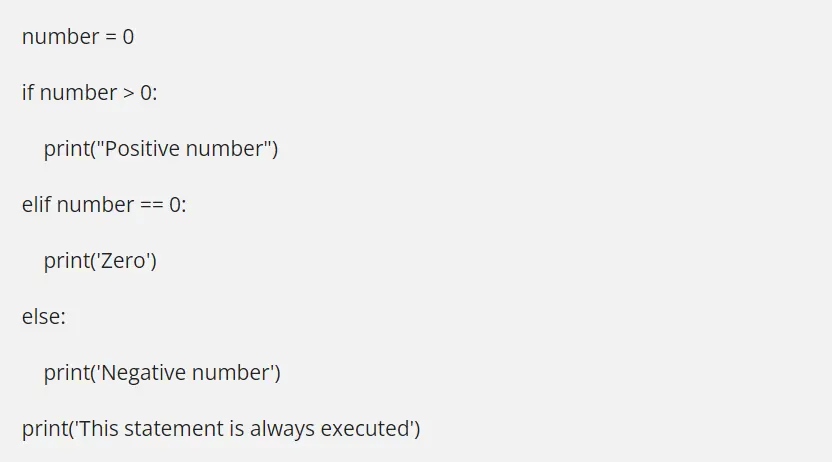Whether you are a beginner or experienced in other coding languages, to many the python elif invalid syntax SyntaxError messages is a common phenomenon while coding using Python. Moreover the python elif invalid syntax SyntaxError is a more common error. In Python, the syntax is usually simple, so meeting a syntax error message is rare, especially an invalid syntax error. However, the chances are slim but possible.
One such example of an invalid syntax error is Elif invalid syntax. This type of error syntax is common while working with elif statements. The Python elif invalid syntax is a type of SytnaxError that arises when the
Contents
Elif Statement
You might need to become more familiar with this term if you are new to Python. Elif statement means else if it combines both else and if commands. It is used in those cases where the previous “ ‘if’ quoted statement is not true, then try this condition (statement quoted with elif).” It is a selective statement as it only proceeds with those statements that are related and necessary, and there are no limitations on the number of times the elif statements are repeated. The statements are evaluated in the order they are declared until the “True” statement is found.
Why does it show Python elif invalid syntax invalid syntax?
As the elif statement is an else if statement, both are necessary, especially the if statement, as it is the crucial statement that initiates the program. So if the “If” statement is missing or misplaced, it will show the elif invalid syntax.
Syntax: –
fileHandle = open ( 'gra1.txt' )
count=0
count1=0
fileList = fileHandle.readlines()
for fileLine in fileList:
line=fileLine.split()
if line[0] == '0':
print "graph G%d {\n", (count)
count +=1
elif line[0] == '1':
print "} \n"
elif line[0]=='':
continue
else:
count1 += 1
if count1==1: a=line[0]
elif count1==2: relation=line[0]
elif count1==3: b=line[0]
else:
print a, relation, b
count1=0
fileHandle.close()The above set of code will return the Python elif invalid syntax.
How to deal with Python elif invalid syntax?
The invalid syntax can be traced easily with the help of the syntax error message. Clicking on the SyntaxError message will show where the error is. However, the flawed part of this comes into the picture when there are multiple errors. When there are various errors, it will show the error it first noticed.
After tracing the errored line, you can easily debug the program by properly indenting the statements, correcting the misplacement, or adding the missing statements correctly.
Resolving the Python elif invalid syntax by Indenting elif properly
The reason the Python elif invalid syntax SyntaxError appears is that if the elif function is not Indented properly, it can show the elif invalid syntax. To Python Python elif invalid syntax error, the elif indentation is required. You need to indent the elif function before the if function.
Syntax: –
fileHandle = open ( 'gra1.txt' )
count=0
count1=0
fileList = fileHandle.readlines()
for fileLine in fileList:
line=fileLine.split()
if line[0] == '0':
print "graph G%d {\n", (count)
count +=1
elif line[0] == '1':
print "} \n"
elif line[0]=='':
continue
else:
count1 += 1
if count1==1: a=line[0]
elif count1==2: relation=line[0]
elif count1==3: b=line[0]
else:
print a relation, b
count1=0
fileHandle.close()
else:
count1 += 1
if count1==1: a=line[0]
elif count1==2: relation=line[0]
elif count1==3: b=line[0]By adding this code, the above code will not show the Python elif invalid syntax SyntaxError caused due to the addition of a second else function.
Resolving the Python elif invalid syntax by Using correct operator
Another cause for the python elif invalid syntax SyntaxError is the use of incorrect Operators in the code. This may result the SyntaxError in the Elif statement. For example a common instance for the Python elif invalid syntax SyntaxError is not using the conditional branches properly.
Syntax:
x = 10
if x > 10:
print("x is greater than 10")
elif x < 10: # Use "elif" instead of "else if"
print("x is less than 10")
else:
print("x is equal to 10")
By using the above code you are giving a proper structure which will executed properly without any SyntaxError message.
FAQs
What is Elif Function?

The Python elif function is a short “else if” function form. It is used when the first given if statement is false, but despite of that, you want to check for another condition. In this situation, the statement is used with elif and else statements to review a series of events.
Syntax: –
What is a nested function?
In Python, the nested function or the inner function is a function that is present inside another function. These functions can access variables of the enclosing scope.
Conclusions
This guide has all the information that can help you find the causes for Python elif invalid syntax SyntaxError and the probable solutions that can help you resolve the error without any issues.
Reference
To learn more about some common errors follow Python Clear’s errors section.

